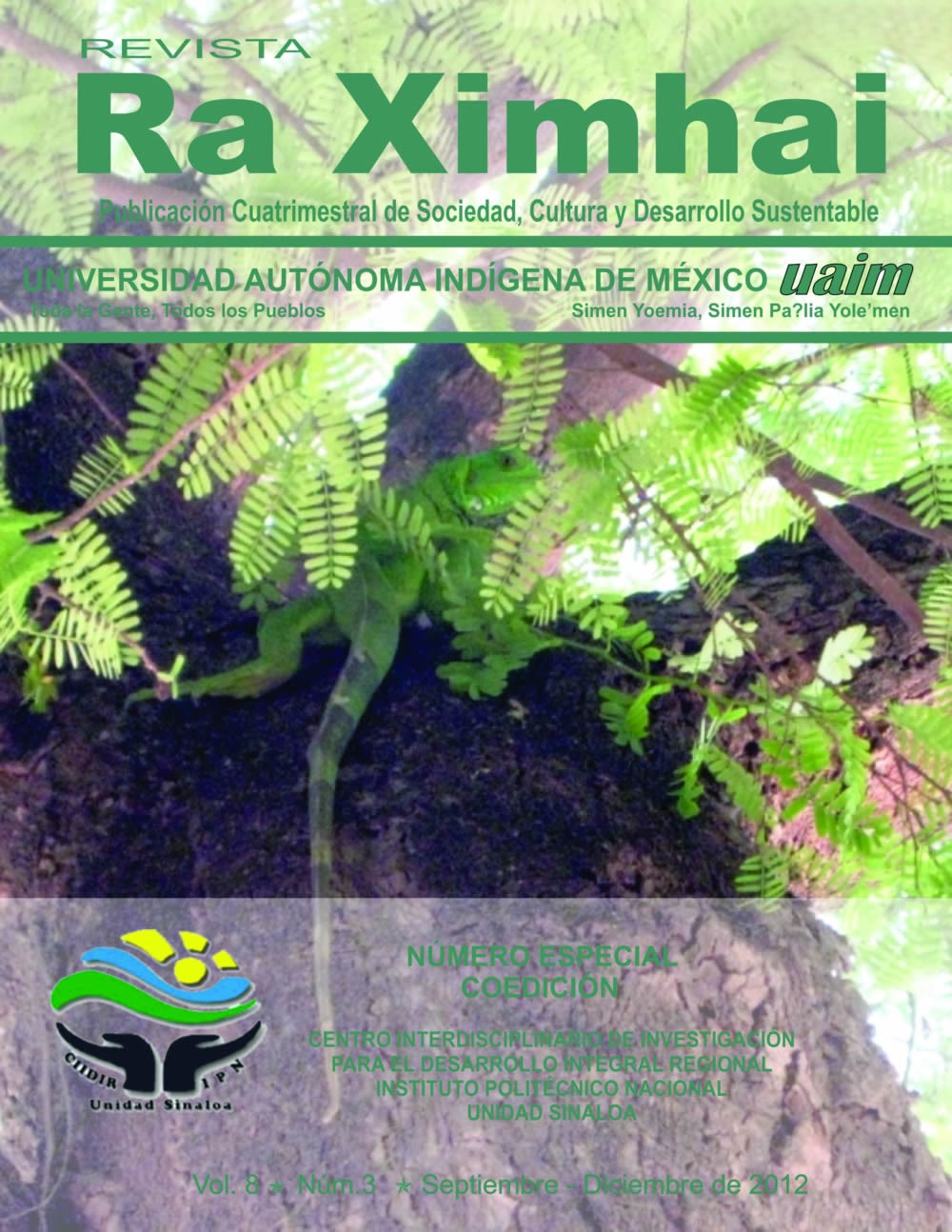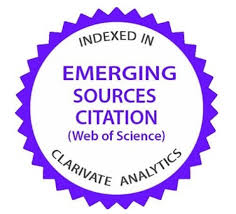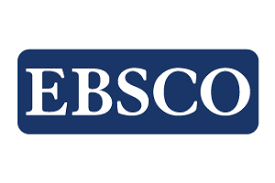Producción de biocombustibles a partir de microalgas
DOI:
https://doi.org/10.35197/rx.08.03.e2.2012.10.lfPalabras clave:
Biodiesel, bioetanol, fotobiorreactores, algas, cianobacterias, sustentabilidad, ecología industrialResumen
Se hace una revisión de la situación de los biocombustibles en el mundo, principalmente del biodiesel. Se comparan las diferentes materias primas para la síntesis de biodiesel y se enfatiza en la producción de éste a partir de microalgas. Se comparan las diferentes microalgas de agua dulce y salada en cuanto a su contenido lipídico y productividad. Se revisa el proceso de biosíntesis de los lípidos y como se puede mejorar su producción de lípidos en estas. Se discute la importancia de manipular genéticamente a Botryrococuus braunni, Nannochloropsis sp, Noechlorisoleobundans y Nitschia sp. También se hace un estudio de las ventajas y desventajas de los diferentes sistemas de cultivo de microalgas. Finalmente se presenta una perspectiva de los biocombustibles a partir de las microalgas. Entre los principales retos a vencer para producir biodiesel están: El costo de producción de biomasa, que involucra la optimización de medios, selección y manipulación de cepas y el diseño de fotobioreactores. También se debe considerar el proceso de separación de biomasa, la extracción de aceites y subproductos, la optimización del proceso de transesterificación, purificación y uso de subproductos.
Descargas
Citas
Abdullah, A. Z., Razali, N., Mootabadi, H. y Salamatinia, B. 2007. Critical technical areas for future improvement in biodiesel technologies. Environmental Research Letters. 2:1-6.
AIE. 2006. Bioenergy Annual Report (2006). IEA Headquarters, Paris France. 124 pp
Amaro, H. M., Guedes, A. C. y Malcata, F. X. 2011. Advances and perspectives in using microalgae to produce biodiesel. Applied Energy 88(10): 3402–3410.
Balat Mustafa, HavvaBalat y Cahide Oz, 2007, Progress in bioethanol processing, Progress in energy and combustion science, Turquía. 23 pp.
Balat, M. 2011. Potential alternatives to edible oils for biodiesel production: A review. Energy Conversion and Management. 52(2): 1479-1492.
Balat, M. y Balat, H. 2010. Progress in biodiesel processing. Applied Energy. 87(6): 1815-1835.
Banerjee, A., Sharma, R; Chisty, Y and Banerjee, U.C. 2002. Botryococcus braunii: A renewable source of hydrocarbons and other chemicals. Critical Reviews in Biotechnology. 22(3): 245-279.
Barbosa, M. J., Hadiyanto, R. y Wijffels, H. 2003. Overcoming shear stress of microalgae cultures in spargedphotobioreactors. Biotechnol.Bioeng.85, 78-85.
Beer, L. L., Boyd, E. S., Peters, J. W. y Posewitz, M. C. 2009. Engineering algae for biohydrogen and biofuel production. Energy Biotechn. 20(3): 264-271.
Behzadi, S. y Farid, M. M. 2007. Review: examining the use of different feedstock for the production of biodiesel. Journal of Chemical Engineering. 2(5): 480-486.
Borowitzka, M. A. 1999. Commercial production of microalgae: ponds, tanks, tubes and fermenters. J. Biotechnol. 70, 313-321.
Boyle, G. (2004). Renewable energy, power for a sustainable future. Oxford University Press, Oxford. Brennan, L. y Owende, P. 2010. Biofuels from microalgae: a review of technologies for production,
processing, and extractions of biofuels and co-products. Renew. Sust. Energ. 14(2): 557–577.
Brown A. C., Knights B. A., Conway E. 1969. Hydrocarbon content and its relationship to physiological state in the green alga Eotryoecoccusbraunii. Phytochemistry, 8, 543-547.
Cheng, L. H., Lv, J. M., Xu, X. H., Zhang, L. y Chen, H. L. 2010. Enhanced lipid production of Chlorella vulgaris by adjustment of cultivation conditions. Bioresource Technology. 101(17): 6797–6804.
Chisti, Y. 2007. Biodiesel from microalgae. Biotechnology Advances. 25(3): 294-306.
Chisti, Y. 2011. Biodiesel from microalgae beats bioethanol. Trends in Biotechnology. 26(3): 126-131. Chisti, Y. y Yan, J. 2011. Energy from algae: Current status and future trends. Applied Energy. 88(10):
–3279.
Courchesne, N. M., Parisien, A., Wang, B. y Lan, C. Q. 2009. Enhancement of lipid production using biochemical, genetic and transcription factor engineering approaches. Journal of Biotechnology. 141(1-2): 31–41.
Degen, J., Uebele, A., Retze, A., Schmidt-Staigar, U. y Trosch, W. A. 2001. A novel airlift photobioreactor with baffles for improved light utilization through flashing light effect. Journal of Biotechnology. 92(2): 89-94.
Demirbas, A. 2010. Energy Sources Part A. Recovery Utilization en Environmental Effects. 32 (10): 909:910.
Demirbas A. 2009. Political, economic and environmental impacts of biofuels. A review. 86(2009) S 108- S 117.
Demirbas A. y Demirbas M. F., 2010. Algae Energy: Algae as a New Source of Biodiesel. Springer London Dordrecht Heidelberg New York. e-ISBN 978-1-84996-050-2
Departamento de Energía de los Estados Unidos. 2011. International energy outlook 2011. Washington: AIE.
Departamento de Energía de los Estados Unidos. 2011. World crude oil prices. Washington. AIE. EBD. 2012. European Biodiesel Board. (En línea). Disponible en: http://www.ebb-eu.org/stats.php.
Garibay-Hernández, A., Vázquez-Duhalt, R., Sánchez-Saavedra, M. y Martínez-Jiménez, A. 2009. Biodiesel a partir de Microalgas. Sociedad Mexicana de Biotecnología y Bioingeniería. 13: 38-61.
Greenwell, H. C., Laurens, M. L., Shields, R. J., Lovitt, R. W. y Flynn, K. J. 2009. Placing microalgae on the biofuels priority list: a review of the technological challenges. J. Roy. Soc. 10: 703-726
Harwood, J. L. y Guschina, I. A. 2006. Lipids and lipid metabolism in eukaryotic algae. Progress in Lipid Research. 45(2): 160–186.
Hu, Q., Sommerfeld, M., Jarvis, E., Ghirardi, M., Posewitz, M., Seibert, M. y Darzins, A. 2008.Microalgaltriacylglycerols as feedstocks for biofuel production: perspectives and advances. Plant Journal. 54: 621-639.
Huang, G. H., Chen, F., Wei, D., Zhang, X. W. y Chen, G. 2010. Biodiesel production by microalgal biotechnology. Applied Energy. 87(1): 38-46.
IPCC. 2009. Intergovernmental panel of climate change. (En línea). Disponible en: http://www.ipcc.ch/ Janssen M, Tramper J, Mur L. R, Wijffels R. H. 2003.Enclosed outdoor photobioreactors: light regime,
photosynthetic efficiency, scale-up, and future prospects. Biotechnol.Bioeng. 81:193–210.
Khan, S. A., Hussain, M. Z., Prasad, S. y Banerjee, U. C. 2009. Prospects of biodiesel production from microalgae in India. Renew. Sust. Energ. 13 (9): 2361–2372.
Koksharova, O. A. yWolk, C. P. 2002. A novel gene that bears a DnaJ motif influences cyanobacterial cell division. J. Bacteriol. 184, 5524-5528
Lee, J. S. y Lee J. P. 2003. Review of advances in biological CO2 mitigation technology. Biotechnol.
Bioproc. E 8 (2003). pp. 259–354.
Li, Q., Du, W. y Liu, D. 2008. Perspectives of microbial oils for biodiesel production. Applied Microbiology Biotechnology. 80: 749-756.
Lin Q., Lin J. 2011. Effects of nitrogen source and concentration on biomass and oil production of a Scenedesmusrubescens like microalga. Bioresource Technology. 102(2): 1615–1621
Mata, T. M., Caetano, N. S. y Martins, A. A. 2010. Microalgae for biodiesel production and other applications: A review. Renewable and Sustainable Energy Reviews. 14(1): 217-232.
Metzger P. y Largeau. 2005. C. Botryococousbraunii: a rich source for hydrocarbons and related ether lipids. Appl. Microbiol. Biotechnol. 66: 486-961.
Murphy D.J. (2001). The biogenesis and functions of lipid bodies in animals, plants and microorganisms. Progress in Lipid Research.40: 325–438.
Mutanda, T., Bux, F., Ramesh, D., Karthikeyan, S., Kumari, S. y Anandraj, A. 2010. Bioprospecting for hyper-lipid producing microalgal strains for sustainable biofuel production. Bioresource Techn. 102(1): 57–70.
NBB. 2012. US National Biodiesel Board. (En línea). Disponible en: http://www.biodiesel.org/production/production-statistics
Pérez-García, O., Escalante, F. M., De Bashan, L. E. y Bashan, Y. 2011. Heterotrophic cultures of microalgae: Metabolism and potential products. Water Research. 45(1): 11-36.
Pruvost, J., Van Vooren, G., Cogne, G. y Legrand, J. 2009. Investigation of biomass and lipids production with Neochlorisoleoabundans in photobioreactor. Bioresource Technology. 100(23): 598Bf8– 5995.
Pulz, O. 2001.Photobioreactors: production systems for phototrophic microorganisms. Appl. Microbiol.
Biotechnol.57, 287–293.
Ratledge, C. 2002. Regulation of lipid accumulation in oleaginous micro-organisms. Biochemical Society Transactions. 30(6): 1047–1050.
Rajakumari, S., Grillitsch, K. y Daum, G. 2008. Synthesis and turnover of non-polar lipids in yeast.
Progress in Lipid Research. 47(3): 157–171.
Rittman, B. 2008. Opportunities for renewable bioenergy using microorganisms. Biotechnology and bioengineering.100(2):203-12.
Robles-Medina, A., González-Moreno, P. A., Esteban-Cerdán, L. y Molina-Grima, E. 2009. Biocatalysis: Towards ever greener biodiesel production. Biotechnology Advances. 27(4): 398–408.
Schenk, P. M., Thomas-Hall, S. R., Stephens, E., Marx, U. C., Mussnug, J. H., Posten, C., y otros. 2008. Second generation biofuels: high-efficiency microalgae for biodiesel production. Bioenergy Resource. 1: 20-43.
Scott, S. A., Davey, M. P., Dennis, J. S. y Horst, I. 2010. Biodiesel from algae: challenges and prospects.
Current Opinion in Biotechnology. 21(3): 277-286.
Sheedlo, M. 2008. A review of the processes of biodiesel production. Basic Biotechnology. 4: 61-65.
Shen, Y., Yuan, W., Pei, Z. J., Wu, Q. y Mao, E. 2009. Microalgae mass production methods. Transactions of the ASABE. 52(4): 1275–1287.
Sims, R. y Christenson, L. 2011. Production and harvesting of microalgae for wastewater treatment, biofuels and subproducts. Biotechnology Advances. 29(6): 686–702.
Singh, A., Singh-Nigam, P. y Murphy, J. D. 2011.Mechanism and challenges in commercialisation of algal biofuels. Bioresource Technology. 102(1): 26-34.
Spolaore, P., Joannis-Cassan C., Duran E., Isambert, A. 2006.Commercial applications of microalgae. J. Biosci. Bioeng.101: 87–96.
Srivastava, A. y Prasad, R. 2000. Triglycerides-based diesel fuels. Renewable & Sustainable Energy. 4(2): 111-133.
Stephanopoulos, G., Fischer, C. R. y Klein-Marcuschamer, D. 2008. Selection and optimization of microbial hosts for biofuels production. Metabolic Engineering. 10(6): 295–304.
Timilsina G.R. y Mevel S. 2010. Biofuels and Climate Change mitigation: A CGE Analysis Incorporating Land-use change. Policy Research Working Paper 5672.World Bank, Washington D.C.
Timilsina, G. R., y Shrestha, A. 2011. How much hope should we have for biofuels?. Energy. 36(4): 2055- 2069.
Tredici, M.R. y Materassi, R. 1992. From open ponds to alveolar panels: the Italian experience in the development of reactors for the mass cultivation of phototropic microorganisms. J. Appl. Phycol 4, 221-231
Tredici, M. R. 1999. Bioreactors, photo. In: Flickinger MC, Drew SW (eds.) Encyclopedia of bioprocess technology: fermentation, biocatalysis and bioseparation. Vol 1.Wiley, New York. pp. 395–419.
Ugwu, C. U., Aoyagi, H. y Uchiyama, H. 2008. Photobioreactors for mass cultivation of algae.
Bioresource Technology. 99(10): 4021-4028.
Yeesang, C. y Cheirsilp, B. 2011. Effect of nitrogen, salt, and iron content in the growth medium and light intensity on lipid production by microalgae isolated from freshwater sources in Thailand. Bioresource Technology: 102(3): 3034–3040.
Descargas
Publicado
Cómo citar
Número
Sección
Licencia
Derechos de autor 2012 Luis Carlos Fernández Linares, Jorge Montiel Montoya, Aarón Millán Oropeza, Jesús Agustín Badillo Corona

Esta obra está bajo una licencia internacional Creative Commons Atribución-NoComercial 4.0.
Usted es libre de:
- Compartir — copiar y redistribuir el material en cualquier medio o formato
- Adaptar — remezclar, transformar y construir a partir del material
- La licenciante no puede revocar estas libertades en tanto usted siga los términos de la licencia
Bajo los siguientes términos:
- Atribución — Usted debe dar crédito de manera adecuada , brindar un enlace a la licencia, e indicar si se han realizado cambios . Puede hacerlo en cualquier forma razonable, pero no de forma tal que sugiera que usted o su uso tienen el apoyo de la licenciante.
- NoComercial — Usted no puede hacer uso del material con propósitos comerciales .
- No hay restricciones adicionales — No puede aplicar términos legales ni medidas tecnológicas que restrinjan legalmente a otras a hacer cualquier uso permitido por la licencia.








